|
Photo
|
Description and Author
|
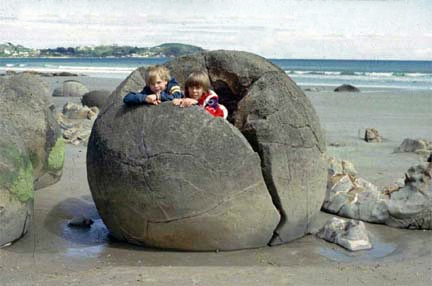 |
Giant calcite septarian concretions, aka the Moeraki "Boulders," South Island, New Zealand. Jim Boles took this photo and writes "My older boys are inside - they would not fit today!" The concretions here, about 1.5 m in diameter, were formed in shallow marine Pliocene mudstone. See Boles, J.R., C.A. Landis, and P. Dale, 1985, The Moleraki Boulders; anatomy of some septarian concretions: Journal of Sedimentary Petrology. v. 55, n. 3, pp. 398-406. Photo: James Boles. |
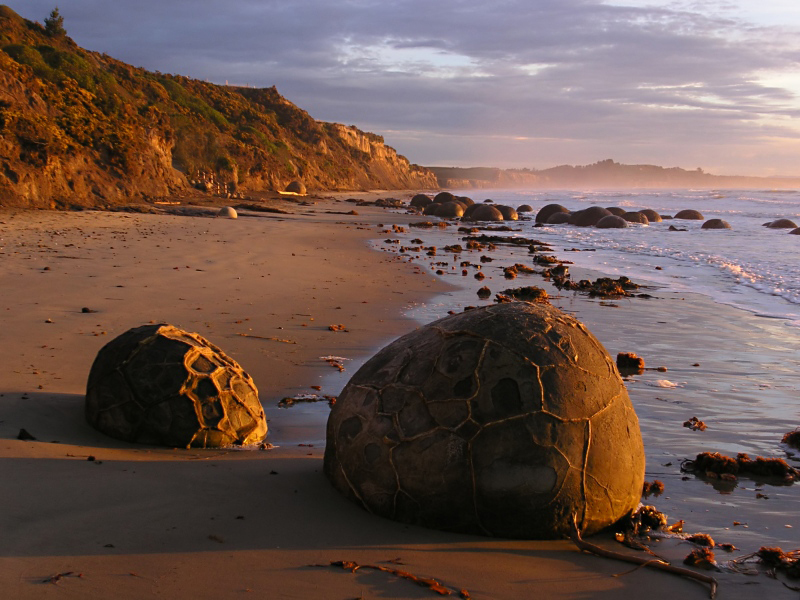 |
View of the Moeraki Septarian Concretions at Sunrise. After Wikipedia commons. Original photo: Karsten Sperling |
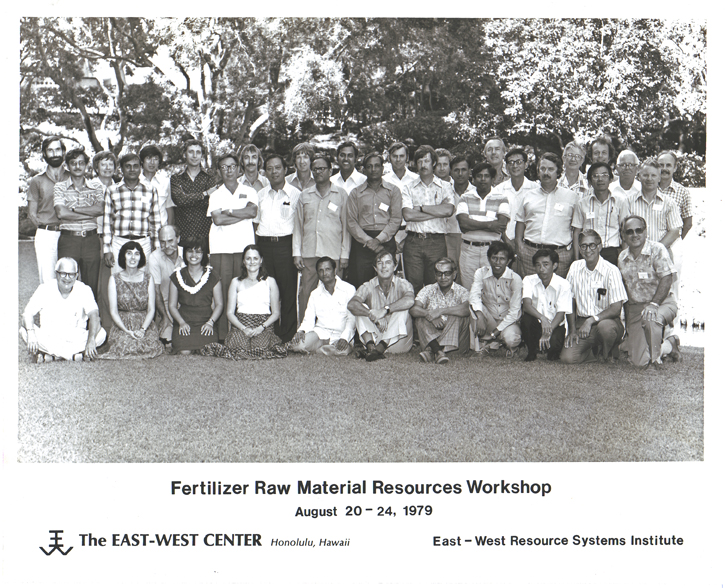 |
Attendees at the 1979 Fertilizer Raw materials Workshop held at the University of Hawaii East-West Center, Honolulu, Hawaii. The workshop was organized by by Dick Sheldon who was on leave from the USGS to the Resource Systems Institute of the EWC. Many of the participants shown in the photo were also active in IGCP Project 156 (Phosphorites) that ran from 1978-1985. See here for participants! |
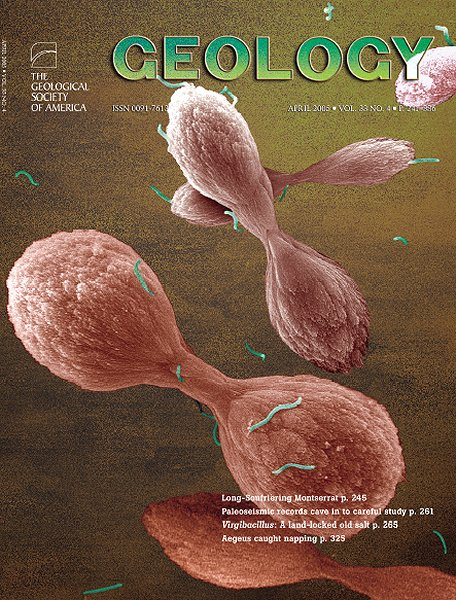 |
Coverphoto from Geology, V. 33, No 4 (2005). Dumbbell-shaped dolomite produced in a microbial culture of sulfate-reducing bacteria (shown in green) grown in a liquid medium adapted to the chemical conditions of the hy persaline dolomite-forming Lagos Vermelha, Brazil. The process of anaerobic carbonate formation was probably more dominant in the geologic past. See "Calibration of the Del18O paleothermometer for dolomite precipitated in microbial cultures and natural environments," by Vasconcelos et al., p. 317-320. Image courtesy of R. Warthmann, A.G. Bitterman and Geomicrobiology Laboratory, ETH-Zürich |
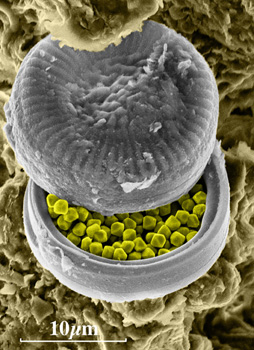 |
Electron photomicrograph showing the two frustules of a centric diatom collected from the clay lining of a Trypaea australiensis (yabby) burrow half a metre below the sediment surface in the Richmond River estuary at Ballina, N.S.W. The lower frustule is filled with very small (≈ 1µm) euhedral pyrite crystals. T . Australiensis is a burrowing crustacean that is common in intertidal and shallow sub-tidal sandbars and beaches in estuaries on the east coast of Australia; anglers commonly use it for bait. The burrows are oxygenated and burrow wall sediment is oxidised when the yabbies push water through their burrows with their pleopods, but locally reducing conditions can develop within this oxidized sediment. In this example, highly reducing conditions have developed in the interior of a decomposing diatom and pyrite crystals have formed when sulphide produced by sulphate-reducing bacteria has combined with dissolved iron from pore-waters. The two halves of the diatom opened when the electron beam in the microscope first hit the sample near the diatom. The image was produced on a Leica scanning electron microscope by Richard Bush using material collected during a study of T. Australiensis burrow chemistry by Geoff Kerr; both are post-graduate students at Southern Cross University, Lismore. Sent by Dr David McConchie |
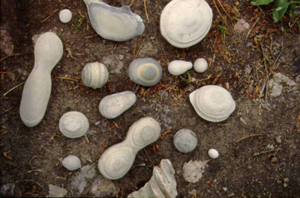 |
From the steep clay banks of the River Vuoksi interesting formations called "Imatrankivi" are revealed from time to time . They are stony concretions of calcium carbonate. Website |
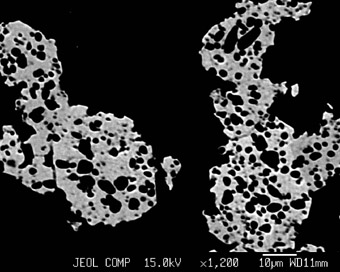 |
Microprobe image of sedimentary pyrite with lots of inclusions (Mississippian Barnett Shale of Texas). Dr. Juergen Schieber Department of Geological Sciences Indiana University email: schiebe@indiana.edu Website |
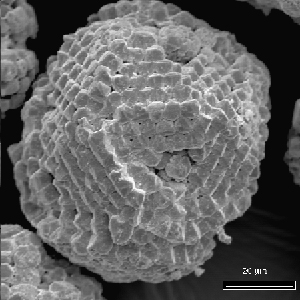 |
Pyrite framboid from the late Jurassic (Tithonian) of the Boulonnais cliffs (close to Wimereux, France). The scale bar is 20 micrometers long. Dr. Nicolas Tribovillard Université Lille 1 Sciences de la Terre email: Nicolas.Tribovillard@univ-lille1.fr |